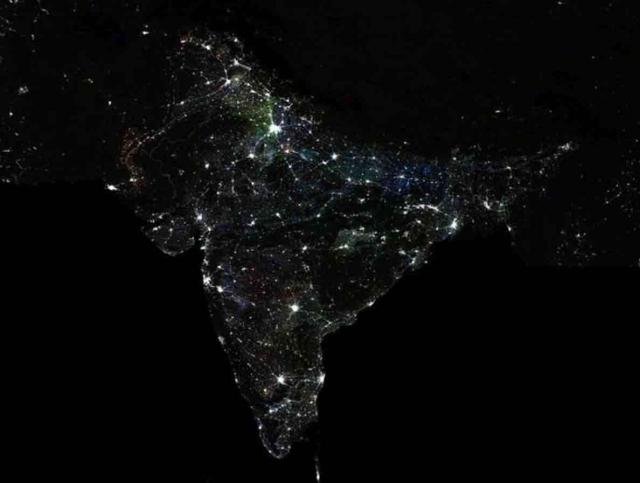Visible Indian Disparity From Space

What pictures taken from satellite to space can play a role in determining the degree of inequality? Economists say, 'yes' could be. At least Indian two economists think that Pratin Chakraborty and Vivek Dehjja are like that. Just do not think, they have presented some evidence of comparative analysis of pictures taken from satellite and satellite cities in 12 different states of India.
According to the BBC report, senior analysts of the Air Force Defense Meteorological Satellite Program (AFDMS) analyzed photos taken from the satellite, senior counsel Fateh Chakraborty and Mumbai-based research firm IDFC Senior Fellow Vivek Barijja. Earth's circulation 14 times a day, these satellites keep the light of the Earth at night. They keep the picture of the light of night in different regions of the world. Two researchers chose photos from this satellite, pictures of certain areas in India.
Researchers said that through satellite pictures, they surveyed 387 districts out of 640 districts in 12 states of India. In these districts 85% of India's total population live. And 80 percent of the country's economic activity (based on total domestic production or GDP) is managed in these districts. In the study, an attempt was made to analyze the picture of the districts found in the satellite and to get a picture of the distribution of India.
It has been found that most of India's dark areas are dark Because, most of the time there is no economic activity in most areas. However, there are some bright lights in some areas, which are proving the economic momentum of those areas. In some regions, there was a gentle light, which would tell about its low level of economic activity. According to the analysis, in various states, as well as showing economic inequality as well as inequalities of state's distribution system, researchers said.
An analysis of the pictures shows that the average brightness of 380 districts under the observation of 12 states is one-fifth of the brightness of big cities like Mumbai or Bengaluru. Again, the remaining 10 percent of the districts are as bright as night, brightness of the rest, and one-third of its brightness. And these comparisons are going on rather gradually. Especially since the beginning of the economic reforms in 1991, this gap has been increasing continuously. The equality that was seen in the economic progress of all these areas before 1991 is the impression of those times. But in the subsequent films, this fraternity did not continue.
Researchers said that as a result of 2014, the average income of the middle-income population of the three richest states of Kerala, Tamil Nadu and Maharashtra is three times the average income of middle income people of three states of Bihar, Uttar Pradesh and Madhya Pradesh. That is, in the economic plan taken after 1991, Indian states could not be equally involved. It created economic inequality among the Indian states. Likewise, economic progress was not the same even in a particular state. That is, discrimination has come from two sides. And the lack of good governance behind this is the reason researchers see.
Vivek Banerjee told the BBC, "There is a wide gap between economic growth between two states in one state and other states and within the same state. And this gap is increasing over time. No, it can not be said as "being rich to the rich". Rather, it is to say that in the direction of economic activity, different regions can not go along in the same way, the wealthy are going out of the reach of the poor. The gap is increasing. '
nice post
good thinking
nice